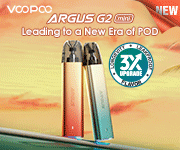Frogprince
Achiever
- Joined
- Mar 24, 2019
- Messages
- 3,261
whats the difference? is the 316L(elite) just a better quality for coils?
just put 2 same builds into steam engine and ss316 shows a slightly higher resistance.
nevermind, google has the answer.
It's the carbon content. 316 stainless steel has a max carbon content of 0.08%. 316L stainless has a max carbon content of 0.03%.
How do you remember which is which? 316L has a Low carbon content. Easy peasy.
Note these are the same materials as SS316 and SS316L, as well as AISI 316 and 316L. No matter how you slice it, the "L" is the difference.
Why Does the Choice Between 316 Vs 316L Stainless Matter?
316 VS 316L STAINLESS STEEL CORROSION RESISTANCE
Performance-wise, 316L is better than any other stainless steel for very high temperature, high corrosion applications. 316L is easy to fabricate, and is used often in construction, marine, and infrastructure industries due to its durability.
The low carbon content of 316L stainless steel means it's slightly more weldable than grade 316. With a higher carbon content, 316 is more likely to experience weld decay. In other words, 316L is more resistant to intergranular corrosion. However, this is only an issue if the metal needs to be welded over a period of several minutes or it's heated to temperatures between 425-815º C.
just put 2 same builds into steam engine and ss316 shows a slightly higher resistance.
nevermind, google has the answer.
It's the carbon content. 316 stainless steel has a max carbon content of 0.08%. 316L stainless has a max carbon content of 0.03%.
How do you remember which is which? 316L has a Low carbon content. Easy peasy.
Note these are the same materials as SS316 and SS316L, as well as AISI 316 and 316L. No matter how you slice it, the "L" is the difference.
Why Does the Choice Between 316 Vs 316L Stainless Matter?
316 VS 316L STAINLESS STEEL CORROSION RESISTANCE
Performance-wise, 316L is better than any other stainless steel for very high temperature, high corrosion applications. 316L is easy to fabricate, and is used often in construction, marine, and infrastructure industries due to its durability.
The low carbon content of 316L stainless steel means it's slightly more weldable than grade 316. With a higher carbon content, 316 is more likely to experience weld decay. In other words, 316L is more resistant to intergranular corrosion. However, this is only an issue if the metal needs to be welded over a period of several minutes or it's heated to temperatures between 425-815º C.
Last edited:













